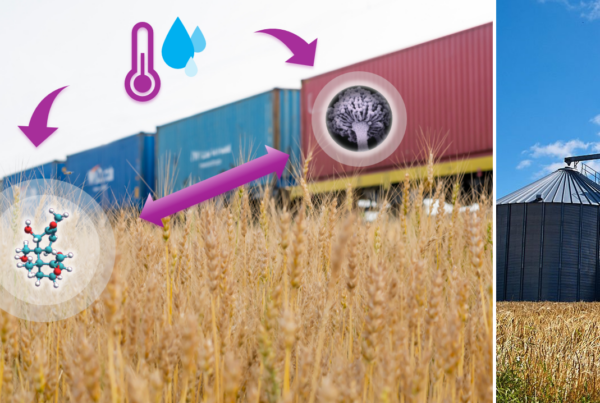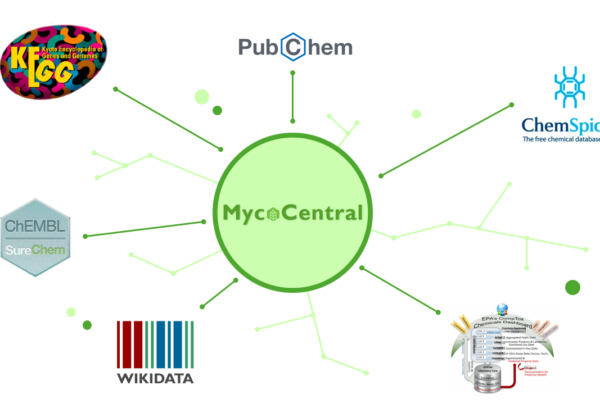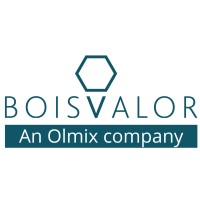Olmix presented its algae-based solutions to answer some of the main challenges of the aquaculture industry at Aquaculture America (Las Vegas, USA).
Once again, Aquaculture America proved itself as one of the major events within the aquaculture industry not only in the USA, but all around the globe. With nearly 200 booths and a conference program that continues to improve its technical quality every year, the event attracted thousands of professionals that had the chance to discuss the main issues that producers are facing these recent years such as aquatic animal health, environmental issues, farm energy cost reduction and regulatory costs, among others.
In this context, Olmix Group made its appearance at booth 216, where the Animal Care team presented the value of the Olmix’s natural algae-based products for aquaculture. They met with several Latin and North American partners, as well as opening new market opportunities within these territories.
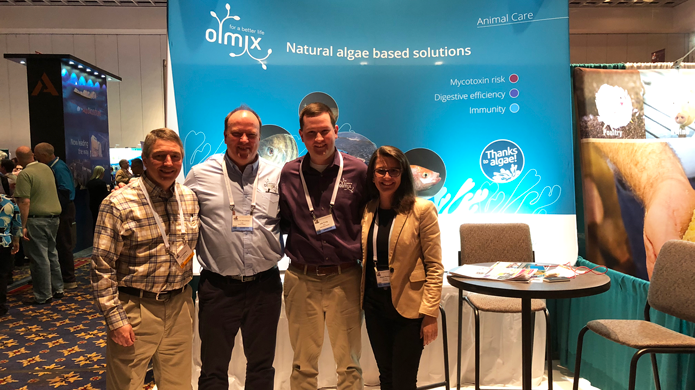
The Olmix Animal Care at booth 216.
Mycotoxin risk and bacterial diseases, at the heart of the symposium
Besides being one of the participants at the tradeshow, Olmix went the extra mile and contributed to the conference program by giving two technical presentations.
First, Mrs. Raquel Pereira, America’s Market Aqua Manager, delivered a dynamic speech on the natural co-occurrence of mycotoxins in feedstuff and the strategies to combat mycotoxin risk in animal production, including aquaculture.
“Due to its dynamic nature, the potential presence of fungal metabolites from the field and/or feedstuff storage is variable globally among feedstuff. Prevention of fungi formation through agricultural practices in the field is becoming more common, but it does not avoid feed contamination”, she explained.
Indeed, mycotoxin risk is a global issue, contaminating more than 25% of harvested cereals, which significantly reduces the performance of all aquatic species. Olmix has been carrying out deep research on mycotoxins negative impact and the levels of contamination in feedstuff and diets to address the risk for fish and shrimp. The take-home message was:
“Because of larvae, juvenile and adults are sensitive to mycotoxins. Therefore, the use of innovative strategies with a wide spectrum to deal with mycotoxin risk in aquaculture feed is strongly recommended during the entire production cycle”.
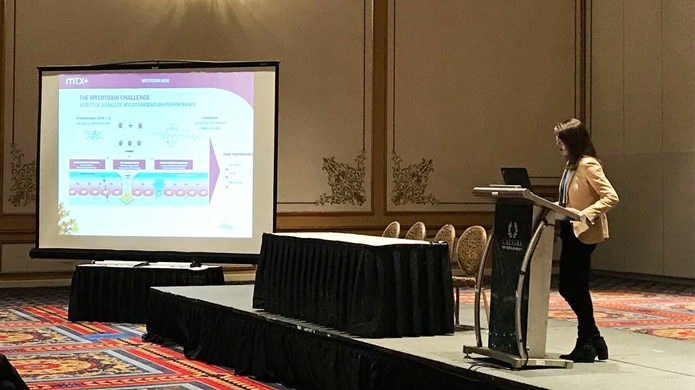
Dr. Raquel Pereira delivered the first Olmix lecture at the event.
The second lecture given by Olmix was delivered by Mr. Maarten Jay van Schoonhoven, who focused his speech on how to increase survival rates in white leg (L.vannamei) shrimp culture affected by Vibrio harveyi and Vibrio parahaemolyiticus causing EMS, using algae-interspaced clay and copper.
“There is a big necessity to find natural solutions within the aquaculture industry. Talking about shrimp, we can now say that it is possible to use gut flora modulators in an effective and easy way to prevent bacterial disease outbreaks. As you know, the shrimp digestive system is still considered one of the main entry points for pathogens, so producers should make sure it is well protected. Resulting diseases can lead to major economic impact”, he explained.
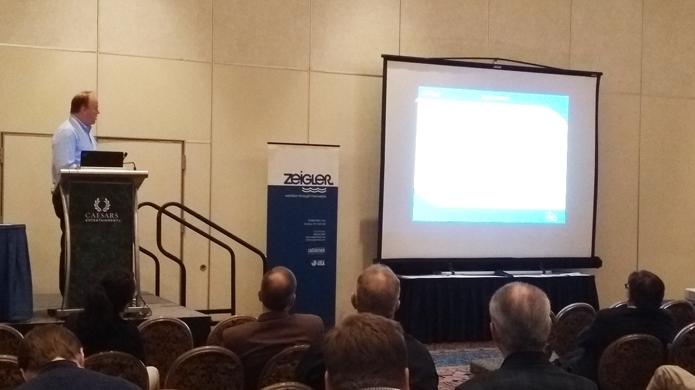
Mr. Maarten Jay van Schoonhoven talked about how to increase survival rates in white leg (L.vannamei) shrimp.
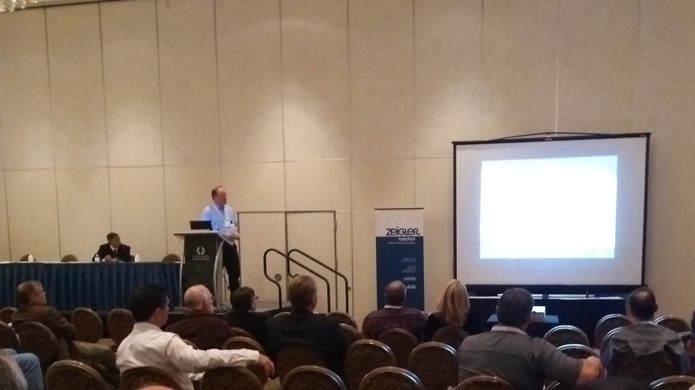
Mr. Maarten Jay van Schoonhoven talked about how to increase survival rates in white leg (L.vannamei) shrimp.
According to Mr. van Schoonhoven, the use of chemical products to deal with common bacterial diseases in shrimp culture has resulted in a non-satisfactory experience for producers because it can lead to bacterial resistance, they can also affect beneficial bacteria, and can lead to rejections at entry ports when residues are detected.
“Treating shrimp with chemical products should not be the way to deal with potential disease outbreaks. The best strategy is to take preventive actions: good pond preparation (drying, removing organic build up, liming…), good quality stock, good management (feed and feeding, water quality). But even with best practices, there is always risk of some omnipresent bacteria. Therefore, the use of natural feed additives such as MFeed is highly recommended”.
Lastly, Mr. van Schoonhoven showed the results of recent trials with MFeed, which significantly improved shrimp survival rates and zootechnical performance.
For more information about our aquaculture products, do not hesitate to contact us.
